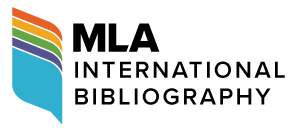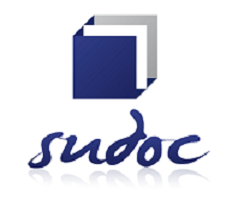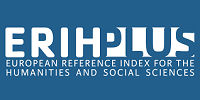Alioum Fantouré’s cult of personality and monstrosity: hybridity as a form of expression of the grotesque
DOI:
https://doi.org/10.7203/HYBRIDA.7.25965Keywords:
Dictature, culte de la personnalité, monstruosité, hybridité, grotesque Abstract
Abstract
With his first two novels, Guinean writer Alioum Fantouré inaugurates the “independence trial” in Guinean literature. In them, he denounces dictatorship and the cult of personality that supports it, in a context of deprivation of freedoms and abuses of all kinds. One of the original features of his writing lies in the fact that these defects are assimilated to a cult whose deities present a figure of monstrosity that can also be read on a formal level, especially if we take a close look at the composition of his second novel, Le Récit du cirque.
This article sets out to demonstrate what is monstrous about these deities and the cult devoted to them, as well as in the texts that depict them, while at the same time examining what, in the deployment of this thematic and formal monstrosity, makes Fantouré’s novels a staging of the grotesque as defined by Mikhail Bakhtin.
 Downloads
Downloads
 References
References
Angui, Aimé. (2016). Le Récit du Cirque… de la Vallée des Morts de Mohamed Alioum Fantouré. Une écriture trangénérique et translittéraire. Estudios Romanicos, volume 25, 27–39. https://revistas.um.es/estudiosromanicos/article/view/274431
Astuc, Rémi. (2010). Du grotesque dans les littératures africaines (Où l’on apprend quels liens peuvent se nouer entre les deux, le sens des coïncidences existants et l’utilité possible du grotesque pour ces littératures). In Rémi Astuc et Pierre Halen (dir.), Actes du colloque Le grotesque dans les littératures africaines. (pp. 5–19). Université de Lorraine. Centre de recherche « Ecritures ». Collection « Littératures des mondes contemporains » (Série Afriques, n° 7). https://ecritures.univ-lorraine.fr/publications/litterature-des-mondes-contemporains-serie-afriques/le-grotesque-en-litterature
Bakhtine, Mikhaïl. (1970). L’œuvre de François Rabelais et la culture populaire au Moyen Âge et sous la renaissance. Gallimard.
Bakhtine, Mikhaïl. (1978). Esthétique et théorie du roman. Gallimard.
Camara, Laye. (1966). Dramouss. Plon.
Chevrier, Jacques. (2009). Le règne du tyran : théâtralisation et pléthore verbale dans le roman africain contemporain. In Alpha Ousmane Barry (dir.), Discours d’Afrique. Tome 1 : Pour un rhétorique des identités postcoloniales d’Afrique subsaharienne (pp. 267–278). Presses Universitaires de Franche Comté.
Coulibaly, Adama. (2009). Autres observations sur les nouvelles écritures africaines. En-Quête (21), 27–48.
Coulibaly, Adama. (2017). Le postmodernisme littéraire et sa pratique chez les romanciers francophones en Afrique noire. L’Harmattan.
Dabla Sewanou, Jean-Jacques. (1986). Nouvelles écritures africaines. Les romanciers de la Seconde Génération. L’Harmattan.
Diderot, Denis. (1796). Jacques le Fataliste et son maître. Buisson.
Duperrex, Matthieu & Dutrait, François. (2011). Qu’est-ce qu’un monstre? Enfances & Psy, (51), 17–24. https://doi.org/10.3917/ep.051.0017
Foucart, Jean. (2010). Monstruosité et transversalité. Figures contemporaines du monstrueux. Pensée plurielle, (24), 45–61. https://doi.org/10.3917/pp.024.0045
Fantoure, Alioum. (1972). Le Cercle des Tropiques. Présence Africaine.
Fantoure, Alioum. (1975). Le Récit du cirque de la Vallée des Morts. Buchet/Chastel.
Genette, Gérard. (1982). Palimpsestes : littérature au second degré. Seuil.
Kourouma, A. (1968). Les Soleils des Indépendances. Presses Universitaires du Québec.
Labou Tansi, Sony. (1979). La vie et demie. Seuil.
Midiohouan, Guy Ossito. (1985). L’utopie négative d’Alioum Fantouré, essai sur Le Cercle des Tropiques. Silex.
Mbembe, Achille. (2000). De la postcolonie, Essai sur l’imagination politique dans l’Afrique contemporaine. La découverte.
Munier, Brigitte. (2012/II). La monstruosité du Golem, figure tutélaire de la modernité occidentale. Lo Sguardo – Rivista di Filosofia, (9), 219–238. http://www.losguardo.net/wp-content/uploads/2015/12/Spazi_del_mostruoso.pdf
Pageaux, Daniel-Henri. (1985). Entre le renouveau et la modernité. Notre Librairie, (78), 31–35. https://gallica.bnf.fr/ark:/12148/bpt6k6494740t/f33.item
Pageaux, Daniel-Henri. (2010). Entre hybridité postcoloniale et néo-baroque : une voie pour le « grotesque » africain. In Rémi Astuc et Pierre Halen (dir.), Actes du colloque Le grotesque dans les littératures africaines (pp. 21–31). Université de Lorraine. Centre de recherche « Ecritures ». Collection « Littératures des mondes contemporains » (Série Afriques, n° 7). https://ecritures.univ-lorraine.fr/publications/litterature-des-mondes-contemporains-serie-afriques/le-grotesque-en-litterature
Pare, Joseph. (1997). Écritures et discours dans le roman africain francophone post-colonial. Kraal.
Rouch, Alain. (1987). Notes de lecture. Notre Librairie, (88/89), 185–186. https://gallica.bnf.fr/ark:/12148/bpt6k6505819t/f187.item
Semujanga, Josias. (1992). La littérature africaine des années quatre-vingt : Les tendances nouvelles du roman. Présence francophone, (41), 41–56.
Sow, Mamadou Yaya (2021). Le personnage abject dans l’œuvre de Libar Fofana [Thèse de doctorat en Littératures africaines, Université Général Lansana Conté de Sonfonia-Conakry]. HAL science ouverte. https://hal.science/tel-03658642/document
Tchassim, Koutchoukalo. (2016). Fictions africaines et écriture de démesure. Editions Continents.
Published
How to Cite
-
Abstract281
-
HTML (Français )296
-
PDF (Français )102
Issue
Section
License
![]()
All the documents in the OJS platform are open access and property of their respective authors.
Authors publishing in the journal agree to the following terms:
- Authors keep the rights and guarantee HYBRIDA the right to be the first publication of the document, licensed under a Creative Commons license Attribution-NonCommercial-ShareAlike 4.0 International (CC BY-NC-SA 4.0) that allows others to share the work with an acknowledgement of authorship and publication in the journal.
- Authors are allowed and encouraged to spread their work (once published) through electronic means using personal or institutional websites (institutional open archives, personal websites or professional and academic networks profiles) once the text has been published.
















